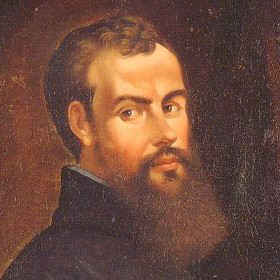Andreas Vesalius Biography: The Flemish physician Andreas Vesahus (also Andreas Vesal, Andre Vesalio or Andre Vesale) is widely considered to be the founder of the modern science of anatomy. He was a major figure of the Scientific Revolution. Vesahus ’s book, “De Humarti Commis Fabrica” (On the Structure of the Human Body) is one of the most important works about human anatomy.
A short Biography on world Famous Scientists and Their Inventions.

Andreas Vesalius Biography, Inventions, Education, Awards and Facts
Born in Brussels, Belgium in a family of physicians and pharmacists, Andreas Vesahus’s father was court apothecary to Charles V of Spain, the Holy Roman Emperor. Vesalius learned medicine from the University of Louvain and the University of Paris. He later obtained his medical degree from the University of Padua in 1537. After his graduation, Vesalius became very interested in anatomy.
During that time, scholars thought that the work of the ancient Greek physician Galen was an authority when it came to human anatomy. As Greek and Roman laws had disallowed the dissection of human beings, Galen had evidently reasoned out analogies related to human anatomy after studying pigs and apes. Vesalius knew that it was absolutely essential to analyze real corpses to study the human body.
Vesalius resurrected the use of human dissection, regardless of the strict ban by the Catholic Church. He soon began to realise that Galen’s work was an evalution of the dissection of animals, not human beings. Vesalius once demonstrated that men and women have the same number of ribs, contrary to the biblical story of Adam and Eve which tells that Eve was brought into existence from one of Adam’s ribs, and that men had one less rib as compared to women. Vesalius proved that belief wrong.
Vesalius published his influential book aboout human anatomy “De Humani Commis Fabrica” (The Structure of The Human Body) in 1543. It contained over 200 anatomical illustrations. The work was the earliest known precise presentation of human anatomy.
It disgraced several of Galen’s doctrines, for instance the Greek belief that blood has the ability to flow between the ventricles of the heart, and that the mandible, or jaw bone, was made up of more than one bones. Particularly, his visual representation of the muscles was found to be very accurate. The seven volumes of the book laid down a solid understanding of human anatomy as the groundwork for all medical practice and curing.
Andreas Vesalius was appointed as a court physician to Charles V of Spain and his family. Vesalius’s bravery and intelligence, however, made many conservative physicians and Catholic clergy his worst enemies. They charged him of being involved in body snatching.
He was accused of murder in 1564 for the dissection of a Spanish noble who, his disputants said, was still alive. Vesalius was also accused of atheism. King Philip II, however, reduced his sentence to a pilgrimage of penitence to the Holy Land. Regrettably on his way back, his vessel was badly harmed by a storm. Vesalius was rescued from the sea, but he died shortly thereafter.
